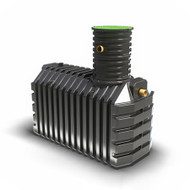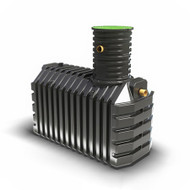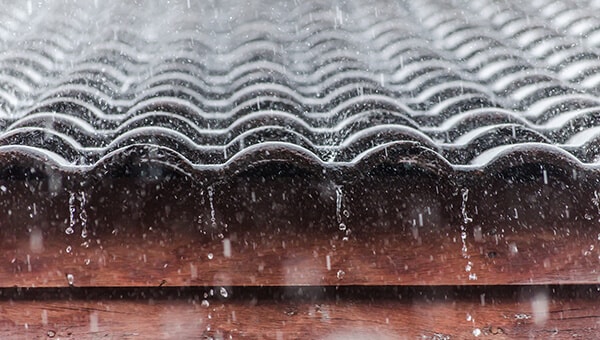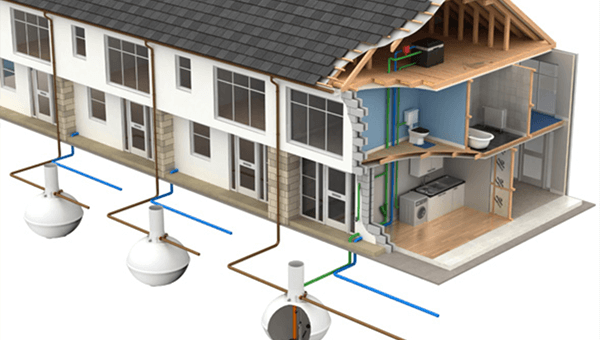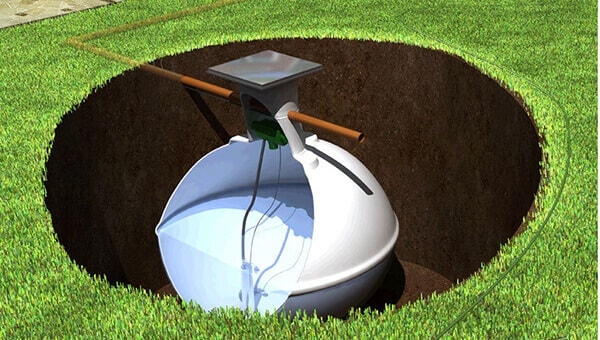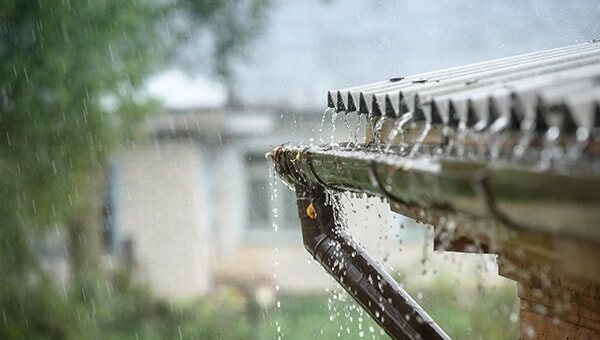So you’ve decided you want to harvest the benefits that rainwater collection can provide, and don’t mind the extra cost and groundwork that comes with installing a Below Ground Integrated System. The next step is to decide how you want your stored water supplied to your property. That means choosing between a Gravity fed system or a Direct.
What is an Integrated Rainwater Harvesting System?
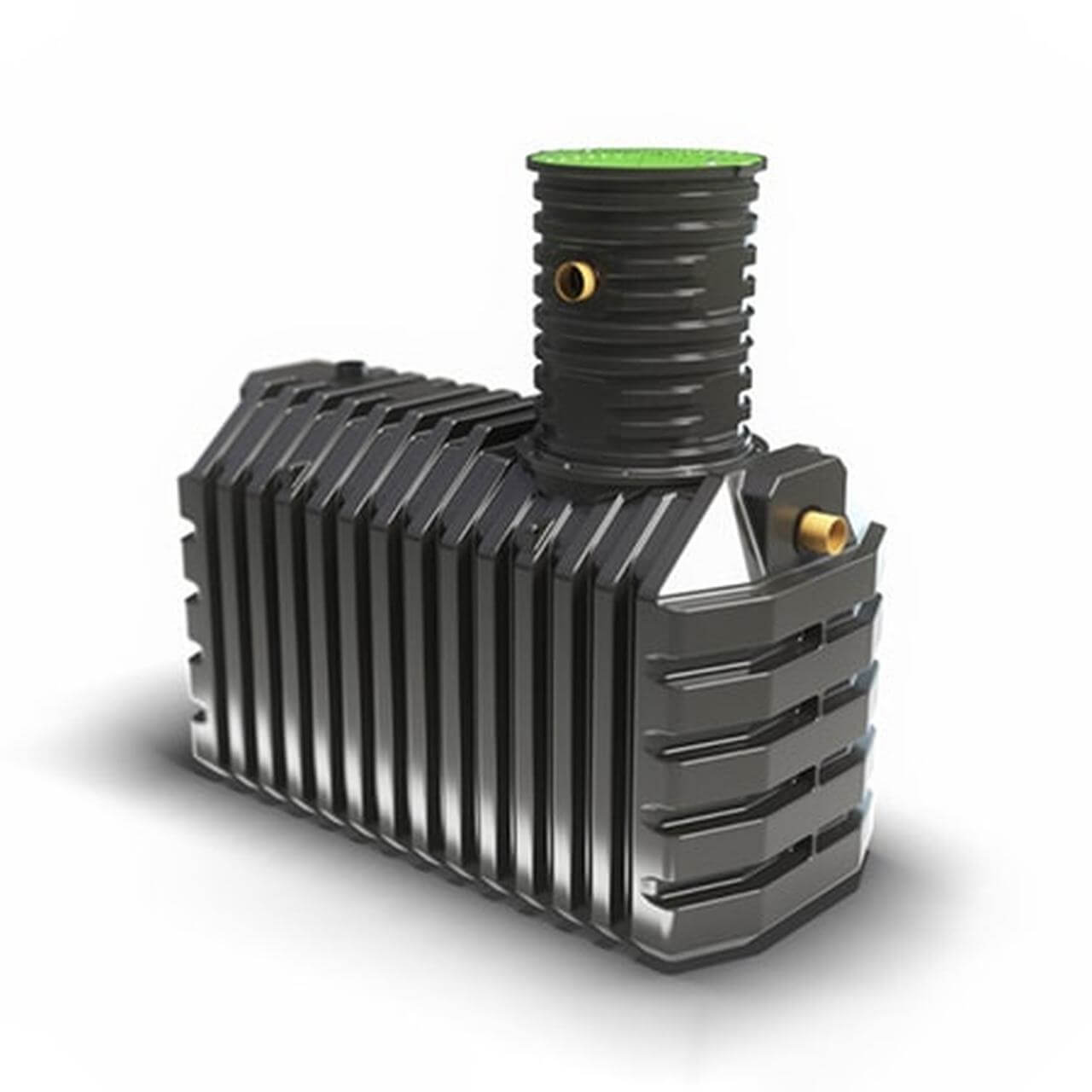
These systems are connected up directly to a property’s existing pipework to feed water to almost any non-potable domestic application, such as toilet flushing and washing machines. They can also be connected up to sprinkler systems and external taps in your garden to further eliminate your dependence on mains water supply.
The system works by taking the rain from your roof gutters, filtering out leaves and debris and storing the water in an underground tank. The water is then pumped into the house to be used for non-potable applications instead of them drawing from the mains supply. If the tank runs empty, the system switches to mains water to ensure your supply is not disrupted. JDP's rainwater harvesting systems offer a host of benefits to both domestic properties and large commercial buildings, whether as a new-build or retrofit option.
Whilst the below ground tank initially requires more work and cost to install, they do come with a number of benefits that make them a worthwhile investment. These include:
- Aesthetic appeal - no big plastic tank detracting from the look of your garden.
- Space-saving – underground tanks don’t take up any above ground space
- Reduced mains water consumption - by up to 50% according to the UK Rainwater Harvesting Association.
- Guaranteed supply of water - systems fitted with a mains back up can automatically switch over to mains supply when the level of stored water reaches a critical low point.
- Protected against the elements – no need to worry about the stored water freezing as the tank is naturally insulated underground.
- Maintain a constant temperature – being stored in a cool dark environment means that the water can be kept at a consistent temperature all year round.
- Ideal for your home & garden – keep your garden green and your washing clean with water that is free of mains supply chemicals.
For more information about why you should install a Rainwater Harvesting System, check out our "What is rainwater harvesting and why is it important?" article.
Fully Integrated Rainwater Harvesting Tanks
Next it’s time to decide which type of system is best for you. There are two main system options commonly available – a Gravity feed system or a Direct feed system. Deciding which one is best for you largely depends on two things – do you have space for a header tank in your loft and do you require/desire your water to be pumped at mains pressure? Let’s take a look at the options available, starting with Gravity fed systems.
Gravity/Indirect Rainwater Harvesting System
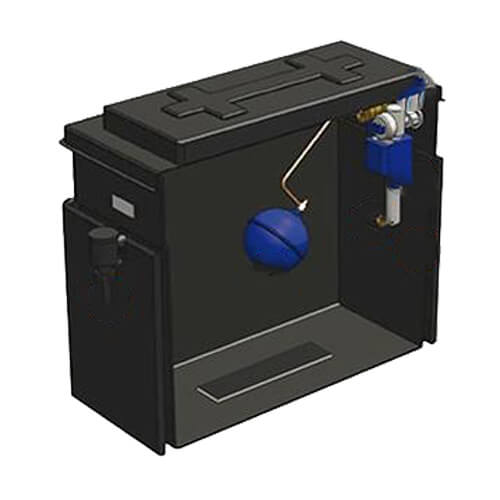
A Gravity System is ideal for domestic applications. This type of system differs in that the harvested water is then pumped up to an elevated header tank, stored, and then gravity fed to the serviced appliances on demand. With this arrangement, the pump only has to work when the header tank needs filling. The main advantage of this system is that, in the event of power failure or rain stocks running dry, the system will automatically switch to the mains water supply to ensure continuity of service.
Benefits of this system include:
- Energy efficient – requiring water to be pumped from the underground tank less often.
- Cost effective – reducing water consumption and therefore water bills.
- Guaranteed water supply – utilising independent mains & rainwater valves in the header tank to automatically switch to mains water if needed.
The downsides to this system come if your property has had its loft converted or if you need your water delivered at mains pressure. If you don’t have space in your loft for the required header tank, then a gravity system would not work. However, if you have a cupboard or void that could be adapted to hold a header tank (that would be at least 1.5m higher than the toilets you want to supply and at least 5m higher than your washing machine), you may still be able to benefit from the low energy costs of a Gravity system. Due to the restrictions on the required installation height, this type of system is likely to be unsuitable for many bungalows.
If space isn’t a problem, and you don’t live in a bungalow, the next caveat to benefits of a gravity fed system is the water pressure. As the name suggests, a Gravity fed system uses the effects of gravity to supply water from the header tank to your toilet/washing machine.
Depending on vertical distance between the tank and your appliance, the pressure of the water supplied can be quite low; i.e. your toilet cistern might take a bit longer to fill than it would on mains pressure. The greater the vertical distance between the appliance and the tank, the better the water pressure will be; but it will never be as high as mains pressure feed.
If either of these problems is a deal breaker for you, a Direct Feed Rainwater Harvesting System might be more suitable.
Direct Rainwater Harvesting System
A Direct System is the most common type of professional rainwater harvesting systems, particularly for domestic properties. They are ideal for properties where it is impractical to have a header tank, or where mains supply pressure is more desirable. Rather than being first pumped up to a header tank, the collected water is pumped straight from the underground storage tank to the desired appliances.
The pump in the tank registers a drop in pressure and begins pumping automatically whenever there is a demand for water, such as flushing a toilet or a washing machine drawing for water. It supplies the water directly from the storage tank until the pressure builds up in the pipe, such as when the cistern is full or the washing machine stops its draw, at which point it then automatically shuts off.
Should the rainwater supply begin to run dry, during a prolonged dry spell for example, an integral sensor will detect this and top up the tank with a small amount of mains water to ensure the supply to your serviced appliances remains uninterrupted.
Benefits of a Direct System include:
- Higher Pressure - water is delivered to appliances at mains pressure (3.5bar).
- Cost effective –reducing water consumption and therefore water bills.
- Guaranteed supply of water – automatically topping up from mains supply if required.
- Doesn’t require loft space – suitable for properties where a header tank would be impractical.
The downside to a Direct System is that it does use more energy than a Gravity System, due to the pump being used every time an appliance calls for water, rather than only when the header tank needs topping up. However, this is only really a disadvantage if you have a choice between the two systems. It may not offer any saving to your energy bill, but it will still help to cut the cost of your water bill.
In Summary
Deciding on which of these systems you need largely depends on your situation. Where it is not possible to fit a header tank, a Direct System is your best option. Where it is possible to install a header tank however, a Gravity System can be preferable and offer even greater savings, especially where there is no requirement for high-pressure water supply.
Ultimately though, installing either of these systems will allow you to enjoy the rewards of both environmental and economic savings as you literally stop flushing costly drinking water down the toilet.
JDP has a wide range of a Integrated Rainwater Harvesting Systems available, with both Gravity and Direct feed installation options, and our team is always ready to answer any of your questions and offer advice if you need help choosing the right one for your project.

